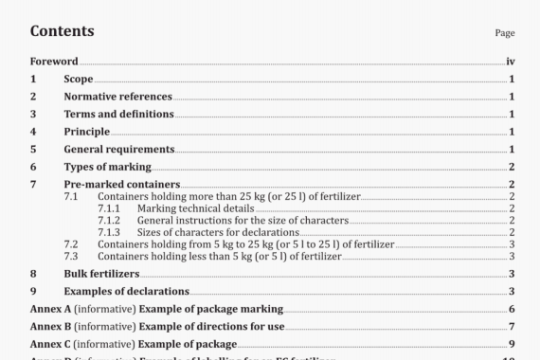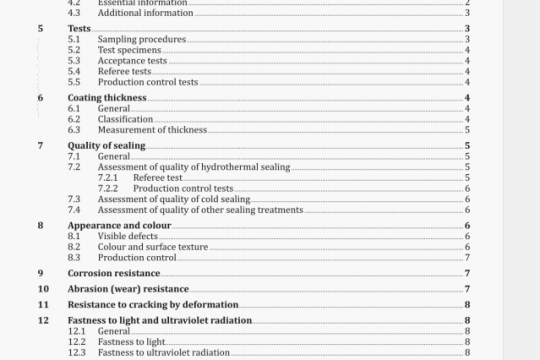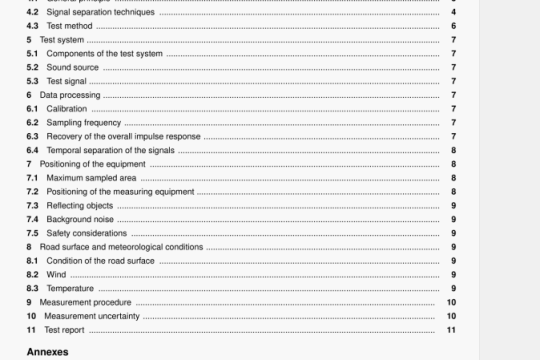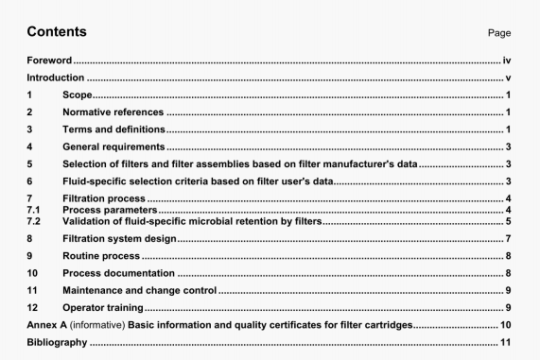ISO 15513:2000 pdf download
ISO 15513:2000 pdf download.Cranes-Competency requirements forcrane drivers (operators), slingers, signallers and assessors.
4.2 Written assessment
Where the assessment process includes a written assessment paper, the following criteria shall be observed.
a) The written assessment should be constructed to not exceed a duration of 60 mm.
b) Sufficient time shall be given to a candidate to complete the test.
NOTE If the assessor becomes aware the candidate has a written-language deficiency, additional time may be permitted to complete the paper.
c) Assistance may be given to the candidate with a written-language deficiency. Any person rendering such assistance shall not prompt the candidate nor help the candidate in any other way. If the candidate has limited literacy skills, the answers may be accepted orally. In this case the assessor shall record all answers. In some certificate classes, specific literacy skills are required to meet the competencies, i.e. estimation or calculation of loads or reading of a load chart. In these situations, oral assistance shall not be rendered.
d) The candidate shall be suitably proficient in the language to be able to read the questions set in the assessment without assistance.
e) The candidate shall express the technical requirements for the assessment in a manner in which they can be correctly interpreted. Incorrect spelling or grammar shall not prejudice the result of the assessment.
f) If additional time or assistance has been permitted, this shall be clearly stated, with the reason, on the Assessment Report.
4.3 Oral assessment
Where the candidate has limited spoken ability of the language of the assessment, the assessor should provide
additional explanation, without compromising the assessment, at a level appropriate to the work and equipment.
4.4 Results
In order to be considered “Competent”, the candidates shall achieve sufficient marks in every area and section to demonstrate competence. A candidate who does not attain such a result shall be considered “Not Yet Competent” and marked accordingly.
4.5 Reassessment
Where an assessment indicates “Not Yet Competent” in an area or section of the paper, the candidate may be
reassessed for that area or section only after additional training in that area or section.
5 Competency requirements
5.1 General
Subclauses 5.2, 5.3 and 5.4 detail the parameters for assessing the skills and knowledge of the crane driver
(operator), slinger and signaller.
5.2 Competency requirements for the crane driver (operator)
5.2.1 General
The requirements are subdivided into the following competency units:
a) Competency unit 1 — Access and secure equipment and work area
— Plan work,
conduct routine checks and inspections, test controls and safety devices, shut down the crane.
b) Competency unit 2 — Secure and transfer load Secure load,
— conduct trial lift,
— transfer load.
c) Competency unit 3 — Set-up, assembly and disassembly of cranes where such operations are carried out by the crane driver
— Plan assembly/disassembly,
set up crane,
disassemble crane.
d) Competency unit 4— Carry out special operations Displace crane,
— carry out multiple-crane lift.
5.2.2 Competency unit 1 — Assess and secure equipment and work area
5.2.2.1 Element of competence — Plan work
Performance criteria:
a) a workplace operations plan is developed in consultation with the relevant authorized workplace personnel. The plan takes into account job requirements, priorities, workplace rules and procedures, identified hazards and hazard control measures;
b) site hazards, such as those listed below, are identified and correct hazard control strategies developed in accordance with the appropriate standard:
overhead power lines;
— trees;
— overhead service lines such as steam, gas, water, telephone;
— underground services;
— uneven and/or unstable ground;
— allowable floor loading as appropriate;
— presence of other workers and persons;
-surrounding buildings/vessels/structures/equipment;-hazardous materials;
-corrosive substances;
—barricades;
-inadequate lighting;
—radio interference;
-inclement weather;
-other equipment
emergency procedures are planned to take into account the location of first-aid and fire-fighting equipment,amenities and access/exit points in the workplace for emergency vehicles and emergency personnel. Thisincludes, where necessary, deciding to abort crane operations where levels of illumination are inadequate;
d)precautions are taken to accommodate the effects of weather conditions in accordance with the appropriate
standard.This includes, where necessary,deciding to abort crane operations where weather conditionsexceed acceptable limits;
e) the operations plan ensures that the work area is correctly illuminated and resticted to authorized personnel only.




